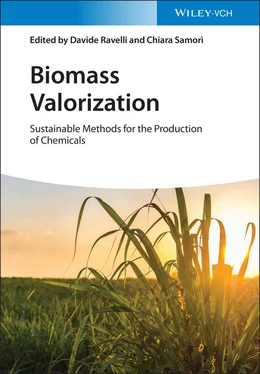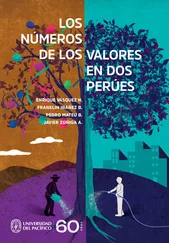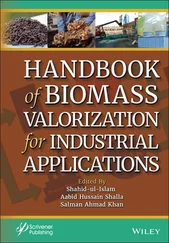Biomass Valorization
Здесь есть возможность читать онлайн «Biomass Valorization» — ознакомительный отрывок электронной книги совершенно бесплатно, а после прочтения отрывка купить полную версию. В некоторых случаях можно слушать аудио, скачать через торрент в формате fb2 и присутствует краткое содержание. Жанр: unrecognised, на английском языке. Описание произведения, (предисловие) а так же отзывы посетителей доступны на портале библиотеки ЛибКат.
- Название:Biomass Valorization
- Автор:
- Жанр:
- Год:неизвестен
- ISBN:нет данных
- Рейтинг книги:3 / 5. Голосов: 1
-
Избранное:Добавить в избранное
- Отзывы:
-
Ваша оценка:
- 60
- 1
- 2
- 3
- 4
- 5
Biomass Valorization: краткое содержание, описание и аннотация
Предлагаем к чтению аннотацию, описание, краткое содержание или предисловие (зависит от того, что написал сам автор книги «Biomass Valorization»). Если вы не нашли необходимую информацию о книге — напишите в комментариях, мы постараемся отыскать её.
Explore the potential of biomass-based chemicals with this comprehensive new reference from leading voices in the field Biomass Valorization: Sustainable Methods for the Production of Chemicals
Biomass Valorization: Sustainable Methods for the Production of Chemicals
Biomass Valorization — читать онлайн ознакомительный отрывок
Ниже представлен текст книги, разбитый по страницам. Система сохранения места последней прочитанной страницы, позволяет с удобством читать онлайн бесплатно книгу «Biomass Valorization», без необходимости каждый раз заново искать на чём Вы остановились. Поставьте закладку, и сможете в любой момент перейти на страницу, на которой закончили чтение.
Интервал:
Закладка:
61 61. Zhang, Z., Song, J., and Han, B. (2017). Catalytic transformation of lignocellulose into chemicals and fuel products in ionic liquids. Chemical Reviews 117 (10): 6834–6880.
62 62. Morales‐delaRosa, S., Campos‐Martin, J.M., and Fierro, J.L.G. (2012). High glucose yields from the hydrolysis of cellulose dissolved in ionic liquids. Chemical Engineering Journal 181–182: 538–541.
63 63. Liu, Y., Xiao, W., Xia, S., and Ma, P. (2013). SO3H‐functionalized acidic ionic liquids as catalysts for the hydrolysis of cellulose. Carbohydrate Polymers 92 (1): 218–222.
64 64. Cao, Y., Zhang, R., Cheng, T. et al. (2017). Imidazolium‐based ionic liquids for cellulose pretreatment: recent progresses and future perspectives. Applied Microbiology and Biotechnology 101 (2): 521–532.
65 65. Dong, K., Liu, X., Dong, H. et al. (2017). Multiscale studies on ionic liquids. Chemical Reviews 117 (10): 6636–6695.
66 66. da Costa Lopes, A.M. and Bogel‐Łukasik, R. (2015). Acidic ionic liquids as sustainable approach of cellulose and lignocellulosic biomass conversion without additional catalysts. ChemSusChem 8 (6): 947–965.
67 67. Vekariya, R.L. (2017). A review of ionic liquids: applications towards catalytic organic transformations. Journal of Molecular Liquids 227: 44–60.
68 68. Miller, G.L. (1959). Use of dinitrosalicylic acid reagent for determination of reducing sugar. Analytical Chemistry 31 (3): 426–428.
69 69. Zhu, Y., Kong, Z.N., Stubbs, L.P. et al. (2010). Conversion of cellulose to hexitols catalyzed by ionic liquid‐stabilized ruthenium nanoparticles and a reversible binding agent. ChemSusChem 3 (1): 67–70.
70 70. Caes, B.R., Van Oosbree, T.R., Lu, F. et al. (2013). Simulated moving bed chromatography: separation and recovery of sugars and ionic liquid from biomass hydrolysates. ChemSusChem 6 (11): 2083–2089.
71 71. von Rybinski, W. and Hill, K. (1998). Alkyl polyglycosides—properties and applications of a new class of surfactants. Angewandte Chemie International Edition in English 37 (10): 1328–1345.
72 72. Villandier, N. and Corma, A. (2010). One pot catalytic conversion of cellulose into biodegradable surfactants. Chemical Communications 46: 4408–4410.
73 73. Villandier, N. and Corma, A. (2011). Transformation of cellulose into biodegradable alkyl glycosides by following two different chemical routes. ChemSusChem 4 (4): 508–513.
74 74. Puga, A.V. and Corma, A. (2014). Efficient production and separation of biodegradable surfactants from cellulose in 1‐butyl‐3‐methylimidazolium chloride. ChemSusChem 7 (12): 3362–3373.
75 75. Van Putten, R.J., van der Waal, J.C., de Jong, E.D. et al. (2013). Hydroxymethylfurfural, a versatile platform chemical made from renewable resources. Chemical Reviews 113 (3): 1499–1597.
76 76. Mariscal, R., Maireles‐Torres, P., Ojeda, M. et al. (2016). Furfural: a renewable and versatile platform molecule for the synthesis of chemicals and fuels. Energy & Environmental Science 9: 1144–1189.
77 77. van Zandvoort, I., Wang, Y., Rasrendra, C.B. et al. (2013). Formation, molecular structure, and morphology of humins in biomass conversion: influence of feedstock and processing conditions. ChemSusChem 6 (9): 1745–1758.
78 78. Hoang, T.M., Lefferts, L., and Seshan, K. (2013). Valorization of humin‐based byproducts from biomass processing—a route to sustainable hydrogen. ChemSusChem 6 (9): 1651–1658.
79 79. Zhao, H., Holladay, J.E., Brown, H., and Zhang, Z.C. (2007). Metal chlorides in ionic liquid solvents convert sugars to 5‐hydroxymethylfurfural. Science 316 (5831): 1597–1600.
80 80. Choudhary, V., Mushrif, S.H., Ho, C. et al. (2013). Insights into the interplay of Lewis and Brønsted acid catalysts in glucose and fructose conversion to 5‐(hydroxymethyl)furfural and levulinic acid in aqueous media. Journal of the American Chemical Society 135 (10): 3997–4006.
81 81. King, A.W.T., Asikkala, J., Mutikainen, I. et al. (2011). Distillable acid‐base conjugate ionic liquids for cellulose dissolution and processing. Angewandte Chemie International Edition 50 (28): 6301–6305.
82 82. Sen, S., Losey, B.P., Gordon, E.E. et al. (2016). Ionic liquid character of zinc chloride hydrates define solvent characteristics that afford the solubility of cellulose. The Journal of Physical Chemistry B 120 (6): 1134–1141.
83 83. Cao, N.J., Xu, Q., and Chen, L.F. (1995). Acid hydrolysis of cellulose in zinc chloride solution. Applied Biochemistry and Biotechnology 51 (1): 21–28.
84 84. de Almeida, R.M., Li, J., Nederlof, C. et al. (2010). Cellulose conversion to isosorbide in molten salt hydrate media. ChemSusChem 3 (3): 325–328.
85 85. Schestakow, M., Karadagli, I., and Ratke, L. (2016). Cellulose aerogels prepared from an aqueous zinc chloride salt hydrate melt. Carbohydrate Polymers 137: 642–649.
86 86. Bodachivskyi, I., Kuzhiumparambil, U., and Williams, D.B.G. (2019). Acid‐catalysed conversion of carbohydrates into furan‐type molecules in zinc chloride hydrate. ChemPlusChem 84 (4): 352–357.
87 87. Bi, Z., Lai, B., Zhao, Y., and Yan, L. (2018). Fast disassembly of lignocellulosic biomass to lignin and sugars by molten salt hydrate at low temperature for overall biorefinery. ACS Omega 3 (3): 2984–2993.
88 88. Abbott, A.P., Boothby, D., Capper, G. et al. (2004). Deep eutectic solvents formed between choline chloride and carboxylic acids: versatile alternatives to ionic liquids. Journal of the American Chemical Society 126 (29): 9142–9147.
89 89. Mamilla, J.L.K., Novak, U., Grilc, M., and Likozar, B. (2019). Natural deep eutectic solvents (DES) for fractionation of waste lignocellulosic biomass and its cascade conversion to value‐added bio‐based chemicals. Biomass and Bioenergy 120: 417–425.
90 90. Sirviö, J.A., Visanko, M., and Liimatainen, H. (2016). Acidic deep eutectic solvents as hydrolytic media for cellulose nanocrystal production. Biomacromolecules 17 (9): 3025–3032.
91 91. Yu, W., Wang, C., Yi, Y. et al. (2019). Choline chloride‐based deep eutectic solvent systems as a pretreatment for nanofibrillation of ramie fibers. Cellulose 26 (5): 3069–3082.
92 92. Tang, X., Zuo, M., Li, Z. et al. (2017). Green processing of lignocellulosic biomass and its derivatives in deep eutectic solvents. ChemSusChem 10 (13): 2696–2706.
93 93. Gericke, M., Fardim, P., and Heinze, T. (2012). Ionic liquids—promising but challenging solvents for homogeneous derivatization of cellulose. Molecules 17 (6): 7458–7502.
94 94. Wang, B., Qin, L., Mu, T. et al. (2017). Are ionic liquids chemically stable? Chemical Reviews 117: 7113–7131.
95 95. Fitzpatrick, S.W., inventor and Biofine Inc., assignee (1997). Production of levulinic acid from carbohydrate‐containing materials. US Patent 5,608,105. 4 March 1997.
96 96. Fitzpatrick, S.W., inventor and Biofine Tech LLC, assignee (2016). Production of formic acid. US Patent 9,481,626. 1 November 2016.
97 97. Hayes, D.J., Fitzpatrick, S., Hayes, M.H.B., and Ross, J.R.H. (2006). The biofine process – production of levulinic acid, furfural, and formic acid from lignocellulosic feedstocks. In: Biorefineries–Industrial Processes and Product: Status Quo and Future Directions (eds. B. Kamm, P.R. Gruber and M. Kamm), 139–164. Weinheim: Wiley‐VCH.
98 98. Weingarten, R., Conner, W.C., and Huber, G.W. (2012). Production of levulinic acid from cellulose by hydrothermal decomposition combined with aqueous phase dehydration with a solid acid catalyst. Energy & Environmental Science 5: 7559–7574.
99 99. Wang, K., Jiang, J., Liang, X. et al. (2018). Direct conversion of cellulose to levulinic acid over multifunctional sulfonated humins in sulfolane–water solution. ACS Sustainable Chemistry & Engineering 6 (11): 15092–15099.
Читать дальшеИнтервал:
Закладка:
Похожие книги на «Biomass Valorization»
Представляем Вашему вниманию похожие книги на «Biomass Valorization» списком для выбора. Мы отобрали схожую по названию и смыслу литературу в надежде предоставить читателям больше вариантов отыскать новые, интересные, ещё непрочитанные произведения.
Обсуждение, отзывы о книге «Biomass Valorization» и просто собственные мнения читателей. Оставьте ваши комментарии, напишите, что Вы думаете о произведении, его смысле или главных героях. Укажите что конкретно понравилось, а что нет, и почему Вы так считаете.












